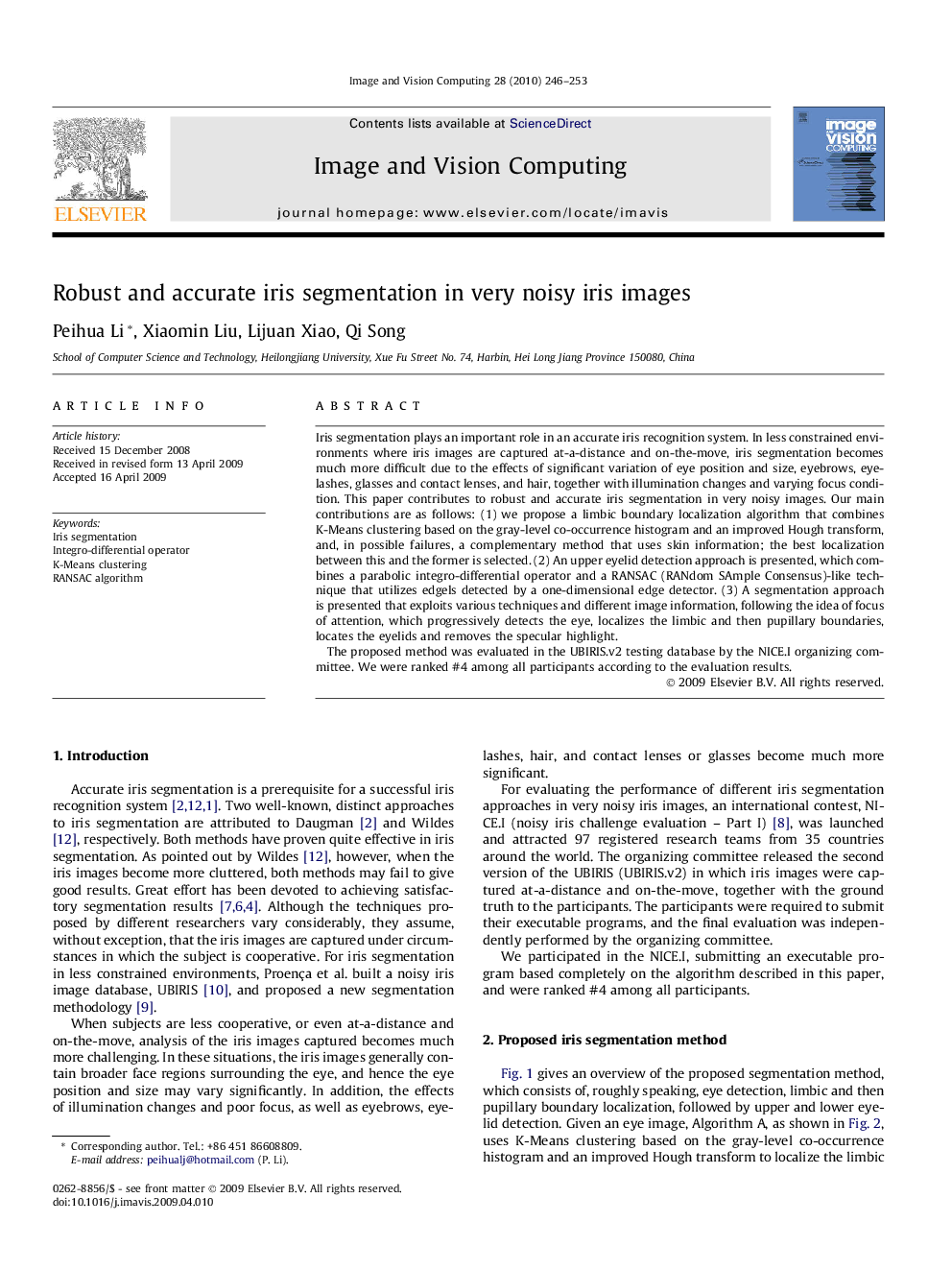| Article ID | Journal | Published Year | Pages | File Type |
|---|---|---|---|---|
| 527420 | Image and Vision Computing | 2010 | 8 Pages |
Iris segmentation plays an important role in an accurate iris recognition system. In less constrained environments where iris images are captured at-a-distance and on-the-move, iris segmentation becomes much more difficult due to the effects of significant variation of eye position and size, eyebrows, eyelashes, glasses and contact lenses, and hair, together with illumination changes and varying focus condition. This paper contributes to robust and accurate iris segmentation in very noisy images. Our main contributions are as follows: (1) we propose a limbic boundary localization algorithm that combines K-Means clustering based on the gray-level co-occurrence histogram and an improved Hough transform, and, in possible failures, a complementary method that uses skin information; the best localization between this and the former is selected. (2) An upper eyelid detection approach is presented, which combines a parabolic integro-differential operator and a RANSAC (RANdom SAmple Consensus)-like technique that utilizes edgels detected by a one-dimensional edge detector. (3) A segmentation approach is presented that exploits various techniques and different image information, following the idea of focus of attention, which progressively detects the eye, localizes the limbic and then pupillary boundaries, locates the eyelids and removes the specular highlight.The proposed method was evaluated in the UBIRIS.v2 testing database by the NICE.I organizing committee. We were ranked #4 among all participants according to the evaluation results.
